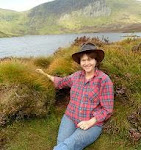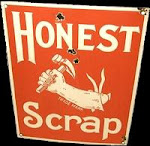We almost missed it at first. It was trying to crawl over a low stone wall into a field full of weeds, stone and rubble.
"Snake!" my husband yelled, rolling down the car window. My daughter and I leaned over to look and there it was, long and brown, like a ribbon of flowing mud.
"Brown means poisonous, doesn't it?" my daughter said. We nodded, enthralled as the snake fell back into the road, then coiled to try again.
"It's so beautiful," my husband breathed. We all watched, fascinated, as the snake uncoiled itself slowly, trying to feed its body over the wall. "Watch how it climbs up that wall -- amazing!"
It really was amazing. I've had it explained to me -- how snakes are able to climb straight up walls -- but I still find it magical. Once in Japan, I tried to pry a snake off a wall with a stick. I thought it would be easy to wedge the stick under the snake and send it flying, but it was as though the snake, which continued to slither effortlessly up the wall, was welded to the surface. My friend and I watched as the snake -- all of two feet long -- poured itself up the smooth plaster wall, not even seeming to notice my stick. My friend, whose room the snake had just disappeared into, was less thrilled than I was, though she did agree with me that there would be fewer mice to plague her at night.
The brown snake was little over a foot long and it was having less success with the low stone wall it was trying to negotiate. It made a third, then a fourth attempt, but fell back into the gutter each time.
"We'd better leave it," I said. I'd noticed a man watching us, no doubt wondering what we were all staring at.
But it was too late. The man had spotted the snake and he was walking over to it. We heard him call out in Turkish. He picked up a stick and before we could say anything, began to whack at the snake. The snake recoiled and tried to get away, but the man was too fast for it. We watched in horror as the snake made a vain attempt to escape, wriggling wildly every time the man brought down his stick, then finally lay still.
"It was our fault," my daughter said softly as we drove away. "If we hadn't stopped to look at it, the snake would have made it over the wall and the man wouldn't have seen it."
We felt so sorry for the snake, we could hardly respond to this. True, the snake was poisonous, but it hadn't been in the man's house or even in his garden; it had been minding its own business, heading for the field where it would no doubt have lived to a ripe old snake age, feeding on rodents and bird eggs.
A few weeks later, we saw another brown snake as we drove along a mountain road, past a field of granite in an olive grove surrounded by banks of pastel-yellow mustard flowers. There were no humans around, but we slowed down -- just to be on the safe side -- then watched as the snake poured itself into a large rock, disappearing safely into a deep crevice.
We hope it lives to a ripe old age -- and never meets any people.












